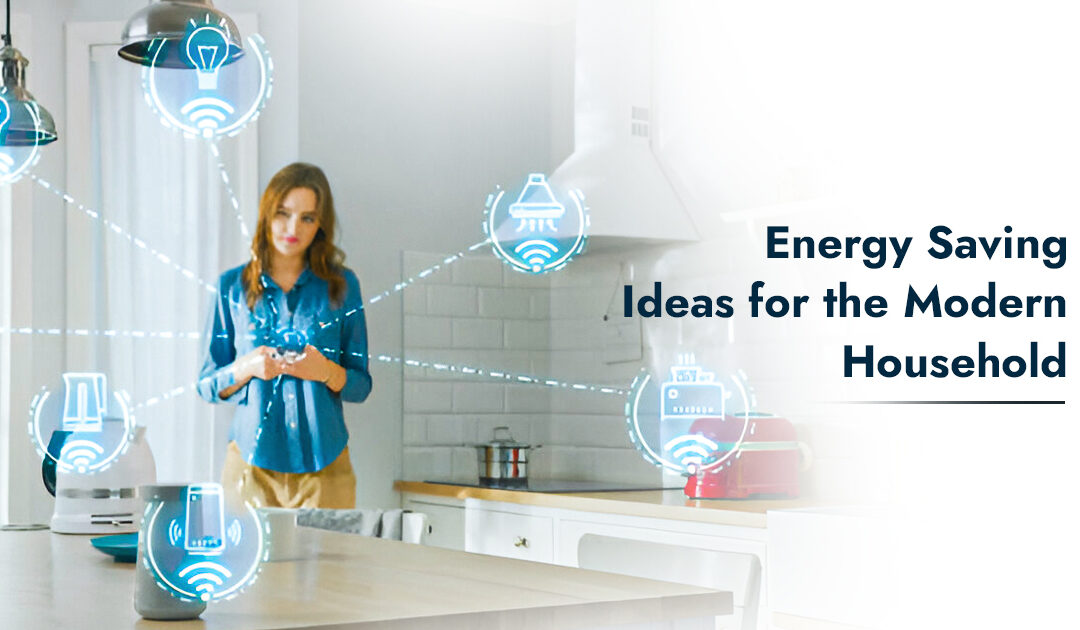The global community is growing more mindful of its energy consumption. Between growing costs and environmental concerns, we’re all looking for ways to reduce our carbon footprint and power bills. Fortunately, technology can aid with the magic of home automation. Integrating smart gadgets and automated processes can help you transform your house into an energy-saving haven. Let’s look at how smart technology can help you take control of your energy consumption and create a more sustainable home environment:
- Incorporate Energy-Efficient Lighting: Incandescent lamps are infamous for their inefficiency. Upgrade them with energy-efficient LED bulbs or smart lighting systems to dramatically lower your energy use. LEDs have higher energy efficiency and last much longer. Smart lights integrate with your smart home system, allowing you to manage them remotely, set routines, and even adjust brightness to suit different moods. Consider lighting that automatically turns off in empty areas or dims for a comfortable movie night, both of which contribute to lower energy consumption.
- Harness the power of Smart blinds and shades: Smart blinds and shades can help manage natural light and reduce energy use significantly. They can be set to open and close automatically based on sunrise, sunset, and indoor temperature. This maximizes the use of natural light during the day while decreasing the need for artificial illumination. During hot summer months, you can save money on cooling by utilizing natural illumination and adjusting indoor temperature.
- Integrate Smart Thermostats in your residence: Purchasing a smart thermostat is a simple yet efficient approach to enhance your home’s heating and cooling systems. Smart thermostats revolutionize energy efficiency. They memorize your heating and cooling preferences and alter the temperature when you leave or sleep. Some models even offer insights into your energy consumption, allowing you to make more informed decisions to minimize consumption even further. This reduces excessive energy consumption while maintaining the optimum degree of comfort.
- Add Smart Power Strips to your home’s system: Many electronic gadgets continue to drain power long after being turned off, resulting in “phantom” consumption of energy. Phantom power drain from equipment left on standby can have a big influence on your energy bills. Smart power strips provide an important answer. Smart power strips prevent this wasteful habit by turning off electricity to connected devices when they are not in use or according to specified schedules. This simple method can save a large amount of energy over time.
- Introduce your home to Smart Appliances: Upgrading to energy-efficient smart appliances like refrigerators, washing machines, and dishwashers can result in significant energy savings over time. Consider your refrigerator automatically switching to energy-saving mode while you’re away. Smart ovens can preheat remotely, ensuring they only turn on when necessary. Look for appliances with ENERGY STAR certification and built-in smart capabilities that enable for remote monitoring and control, allowing you to fine-tune settings for maximum efficiency.
To summarize, smart home automation provides an effective response to our growing concerns about energy usage and environmental impact. Integrating these technologies allows you to create a living place that smoothly balances comfort and sustainability. Consider a home that automatically adjusts lighting and temperature based on your needs, uses natural light for illumination, and avoids phantom power waste from devices. Smart thermostats learn your preferences and optimize heating and cooling, whilst smart appliances provide remote monitoring and control to increase efficiency. The result, therefore, is a huge reduction in utility bills and a lower carbon footprint. By embracing smart home automation, you are not only making your living space more pleasant, but you are also actively contributing to our planet’s greener future.
Share this on:


